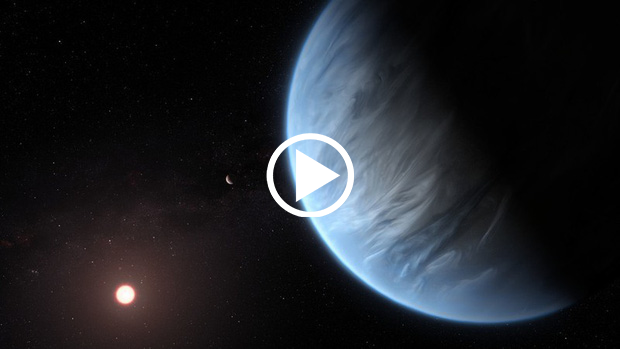Astronomers have discovered for the first time that the “relative distant” planet of Earth outside the solar system has water in its atmosphere.
A team of astronomers have found Earth’s “parent” by first discovering a “habitable” planet with water in its atmosphere.
A research report on the new discovery was published in the September 11 issue of the journal Nature Astronomy. Known as K2-18 b, this mysterious exoplanet is twice as massive as Earth and twice as massive as 8 times our planet. However, its atmosphere could help us answer questions about the possibility of life beyond the solar system.
“Finding water in a potentially habitable world beyond Earth is incredible,” said lead author Angelos Tsiaras of University College London.
“This brings us closer to the answer to a fundamental question: Is Earth unique? “
However, researcher Tsiaras also added that this planet is not considered “Earth 2.0” because “it is significantly heavier and has a different atmospheric composition” from our Earth.
First discovered in 2015, K2-18 b is found in the “habitable zone”, also known as the “Goldilocks zone”, of a solar system far removed from us. Planet K2-18 b is just the right distance from its red dwarf star for liquid water to exist on its surface. The researchers also added that the planet’s star is smaller and cooler than our Sun. Therefore, it can emit deadly radiation and make this environment unsuitable for our present life.
Water vapor had previously only been detected in the atmosphere of superheated gaseous planets, such as Jupiter.
Although humans have never set foot in distant worlds with current technology, astronomer Jonti Horner of the University of South Queensland told ABC the discovery will help researchers better understand similar future planets. To the earth.


